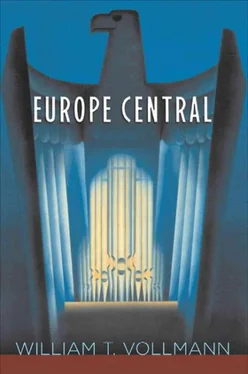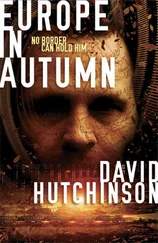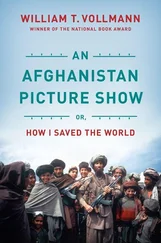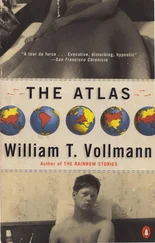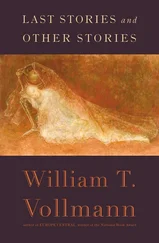Berlin’s trains kept shooting over the steel bridges; Berlin’s boats kept boring underneath them. Our exhausted front-line veterans kept gathering; now they called themselves Old Fighters although most were only in their twenties. Rightists and leftists, they killed each other in their rage.
She visited the morgue and counted up to two hundred and forty-four murdered corpses, naked behind glass, with their clothes rolled up on their bellies. She heard the people who loved those dead ones weeping. She said to herself: Oh, what a dismal, dismal place this is…—Then she went home to Weissenbürgerstrasse, to etch in tears and paint in blood what she had seen. Of course in the World War it had been worse; she must never forget that.
Another of Frau Becker’s children had died. Karl said that nothing could have been done, given the conditions in which that family had to live. He got emotional, actually. Even the living ones didn’t seem to grow very much. She remembered the way that Peter had suddenly grown so large at age fourteen…
She could hear Frau Becker sobbing in Karl’s office. Karl must be giving her a sedative. Then that grocer’s apprentice came back, although by now it was practically the middle of the night; she could hear him coughing; and the atmosphere of Karl’s office, humid with tears and sputum, began to seep up around her. She’d do another woodcut of Frau Becker, but not now, because she didn’t have the strength. Sometimes she felt numb, and then her work wasn’t any good; she longed to feel. But when feeling came back, it often overcame her, and then she could do nothing but weep or stare at the floor. She went into Peter’s room and closed the door. Here she felt at peace.
Many years ago, she and Karl had been quarreling, and so she had slept alone. Then Peter, who had been very little, had a nightmare and came scurrying into bed with her. As soon she pressed him against herself, all the desolation she’d been feeling went away. Of course it was not quite like that anymore. Oh, she felt tired, so tired! She wasn’t yet so old that she had any right to be tired. She said to herself: Work.
She worked without reference to the fiery proto-Cubism of those years, the representational, classical past as dead as the Second Reich itself, dead, dead!—as dead as the Tsarist officers who’d now sunk beneath their own weedy mucky parade grounds so that the Party of Lenin and Stalin could march across their moldering faces. Since 1912 she had kept a room on Siegmund-shof for her plastic arts. That was where she would create the mourning woman out of stone. Mostly she carved, etched, and painted in that flat on Weissenbürgerstrasse. Those were the years when the figures in other people’s paintings began to go ever flatter, more garish, more distorted, the colors hurtful to her although she liked some of the galloping calligraphic riders in Kandinsky. Grosz’s desperately angry caricatures, the X-ray bitterness of Otto Dix, not to mention abstract constructivism; she didn’t swim with that tide. Käthe Kollwitz kept painting poor people, starving people (white figures in dark fields, dark chalk on brown Ingres paper), raped women, mothers with dying children, mothers with dead children. In the end she depicted mainly herself, her stricken, simian face thinking and grieving. She too was a mother with a dead child.
2
The child had died quickly. He’d been the very first of his regiment to die. He’d died innocently, like our German hero Siegfried, who in Latin chronicles, Norse epics, German poems and songs dies over and over again, invincible from the front, stabbed in the back. (Goethe was her favorite writer, very possibly because he was not happy.) He’d never seen his death coming because it was sent to him by machine; how could he have fought it?
(People forget that Hagen, the man who murdered Siegfried, was also a German. He had his reasons. This war was Siegfried’s war. The next war would be Hagen’s.)
After the first anguish, the stretch of loneliness which she, too strong or weak for suicide, had yet to cross remained as immense as the entry on the war in our 1935 Grosser Brockhaus : forty-seven pages, ten charts, twelve full-color maps, inset photoportraits of our German heroes.
3
As I’ve said, she lived on Weissenbürgerstrasse with Karl in a neighborhood whose red-roofed, multistoreyed pillars enclosed humid courtyards for the working poor. She lived there for fifty-two years, accomplishing such works as the lithograph “Fallen” (1921), which depicts a mother clapping her hands to her face in utter grief, her children gathered around her, bewildered, anxious, distressed, reaching up toward her for the reassurance which just then she cannot give. The little girl at her back, who seems to be clutching a doll, stares up at her with the same black-dots-on-white-domino face as so many of the dead children.—Then came widows, more bereaved mothers; it might have been a theme. That was inside. Outside, the police kept taking strikers away in Green Minnas. The workers kept striking. It was in their honor that on a sheet of copper she drypointed the wrinkles, threads and shadows of prisoners’ trousers as they crowded together behind the wire. She printed it, and it wept forever and ever in shiny trembling tears of ink. The birds in the Tiergarten, the green summer light in the Tiergarten, she didn’t have those. She had blackness.
Sometimes she bought her hope from the small newspaper kiosks which stationed themselves between flower stands; she wanted to keep up with developments in Russia. Why not still hope?
But the Kapp Putsch, when Berlin went utterly dark, and then the street battles between strikers and swastika’d Freikorpsmen, the shooting and the shouting, it went on and on. After the World War you’d think that people could have learned something. Naturally, how could they? She’d been four years old when Germans raised their swords to victory in the Mirror-Hall of Versailles; that was what Germans still wanted. Sometimes she felt so tired; there was neither beginning nor end. Karl had turned Social Democrat; after the murder of Luxemburg and Liebknecht he’d said that it was time to be realistic, especially in Scheidemann’s republic. Käthe hadn’t argued. She felt herself more Communist than Social Democrat, and made lithographs for the Communists, because they were more active and lively. Anyhow, Karl had always been a “realistic” sort of person. A few weeks after they’d received the telegram about Peter, Hans’s regiment got sent into a zone of typhus. Karl proposed to write the Ministry of War to advise against this on medical grounds. When Käthe, pleased but surprised that he would even attempt so vain an errand, asked what on earth he was thinking of, he told her, almost spitefully, she later thought: You have strength only for sacrifice and letting go of things, not for keeping track of trifles.—Although his face was bonier and he had less hair, he had scarcely aged much. Of course Käthe’s hair was now entirely white.
In the early winter hours, when she heard fighting in the street, her grief for Germany got mixed up somehow with those recurring dreams she used to have that Peter was still alive; sometimes he and Hans were on the battlefield together; she tried to help him discover what he should do to avoid being shot again.
4
He had fallen on 22.10.14, in Flanders, ten days after his war began. He was the first of his regiment to die.
Peter was the volunteer. The other son Hans, the one she hardly knew, of course survived. Hans saw through the war to its skeleton of politics. He later became a doctor like Karl. He was always realistic.
5
Karl had refused Peter permission to go, so he had turned to his mother. She never knew exactly how he succeeded in getting her to overcome her fear, but he did, after which the father, as usual, obeyed the mother.
Читать дальше
